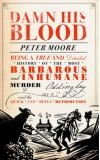
12 Jun 2013 02:45:19
"Murder," said Thomas de Quincey in his famous essay on the subject, "may be laid hold of by its moral handle (as it generally is in the pulpit and at the Old Bailey), and that, I confess, is its weak side; or it may also be treated aesthetically, as the Germans call it – that is, in relation to good taste." De Quincey was having his fun and so should be allowed his joke, but, of course, when it comes to murder, the moral and the aesthetic are intertwined – that is, when enough time has elapsed for us to regard it as entertainment.
I do not take murder, however long after it happened, to be automatically a fit subject for entertainment, and I sometimes wonder whether the existence of tours celebrating the deeds of Jack the Ripper should bother us more than it does.
That said, you can't deny the frisson of the subject, and, as two centuries have passed since the Oddingley murders – there was more than one – we can be allowed to treat this as a spectacle, with a moral attached if we want. The publishers have gone with a cover design that pastiches an early 19th-century shock-horror pamphlet; the subtitle, in wildly varying typefaces and emphases, runs: "Being a true and detailed history of the most barbarous and inhumane murder at Oddingley and the quick and awful retribution". I would take those last five words with a large pinch of salt, if I were you. This is a story that spans a quarter of a century, in terms of people being brought to justice, and even that phrase should be qualified (although I won't spoil your fun by saying how).
The clever thing is how deftly Peter Moore tells his story. At the time, the murders were a sensation so there are plenty of historical documents, but he has arranged the details in a way that shows a very canny eye for story-telling. We have a good idea of the passage of the seasons, and what it was like to be either a pastor, a farmer, or a labourer at the time; the landscape is made vivid, the social and historical context equally so. If you did not know what a blood-stick was and what it was used for before you read this book, you will do afterwards. And people who live in the city will also be cured of many fanciful notions they might entertain about the idyllic wholesomeness of rural life. When Miss Marple said the countryside was a far more murderous place than the city, Agatha Christie may not have had her tongue in her cheek.
The skill with which Moore handles the chronology and context pays off when it comes to generating a wider plausibility. When he describes a person's manner or tone of voice, we believe him. A bad storyteller can't even get us to believe that a fictional character has brushed his teeth. Moore, meanwhile, has us convinced two centuries after the event when he describes a dairymaid's fears, or someone's sleepless night in a cell. He has witnesses to draw on, of course, but he doesn't overdo it. (That this is his first book is quite remarkable, and he is also disgustingly young.) The trick to getting the atmospherics right is not to overinsist on the atmospherics.

